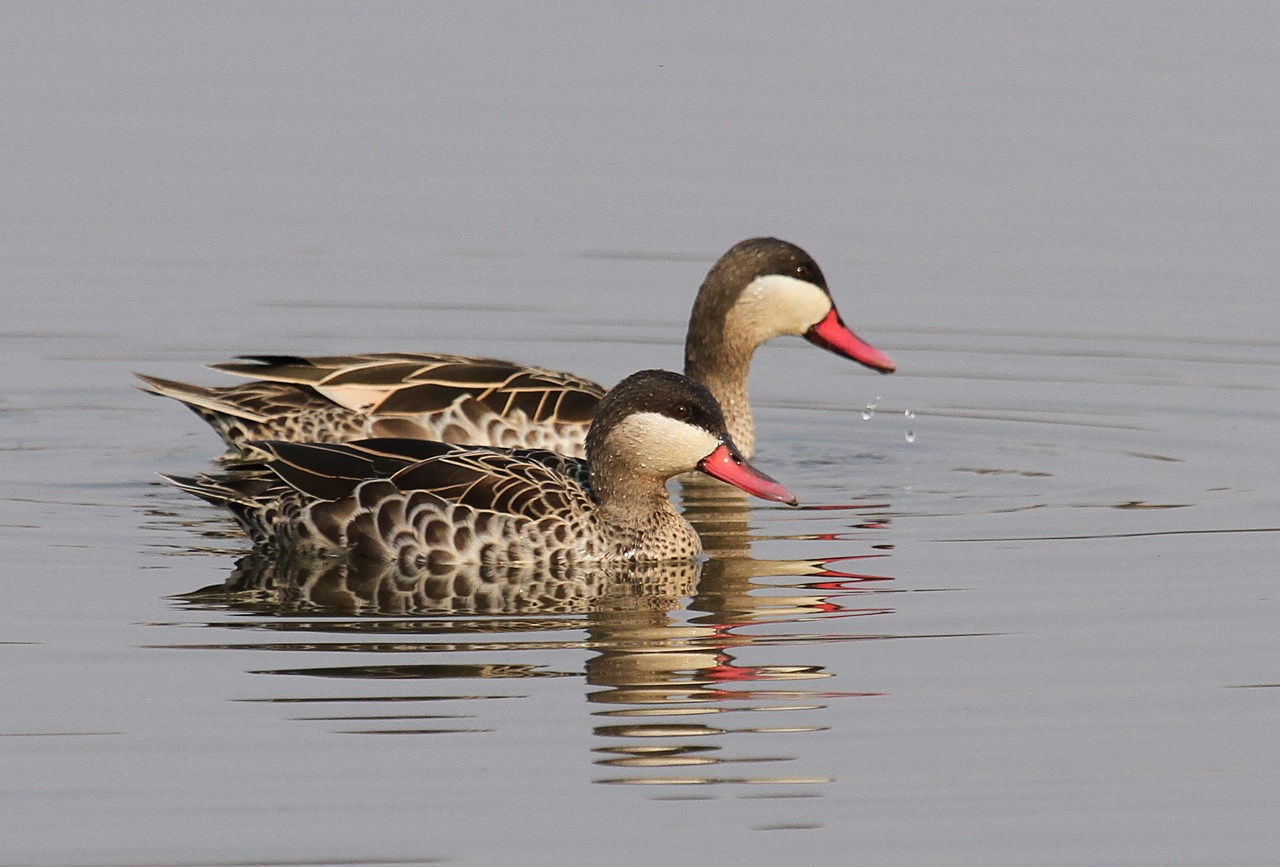Red-billed Teal
A species of Anas, Also known as Red-bill Teal Scientific name : Anas erythrorhyncha Genus : Anas
Red-billed Teal, A species of Anas
Also known as:
Red-bill Teal
Botanical name: Anas erythrorhyncha
Genus: Anas
Content
Description General Info
Description
The red-billed teal or red-billed duck (Anas erythrorhyncha) is a dabbling duck which is an abundant resident breeder in southern and eastern Africa typically south of 10° S. This duck is not migratory, but will fly great distances to find suitable waters. It is highly gregarious outside the breeding season and forms large flocks. The red-billed teal is 43–48 centimetres (17–19 in) long and has a blackish cap and nape, contrasting pale face, and bright red bill. The body plumage is a dull dark brown scalloped with white. Flight reveals that the secondary flight feathers are buff with a black stripe across them. The sexes are similar, but juveniles are duller than adults. This is a quiet species, but the displaying male has a whzzt call, whereas the female has a soft Mallard-like quack. The red-billed teal is a bird of freshwater habitats in fairly open country and is an omnivore. It feeds by dabbling for plant food, or foraging on land mainly in the evening or at night. It nests on the ground in dense vegetation near water. This is one of the species to which the Agreement on the Conservation of African-Eurasian Migratory Waterbirds (AEWA) applies. 
Size
48 cm
Nest Placement
Ground
Feeding Habits
Red-billed Teal has a varied diet, mainly consuming seeds, aquatic vegetation, and invertebrates. They forage by dabbling in shallow waters, grazing on land, and sometimes feeding at night. Red-billed Teal's unique adaptation includes primarily eating Panicum schinzii grass seeds, allowing nesting in semi-arid regions.
Habitat
The red-billed Teal primarily inhabits a range of freshwater wetlands, which include lakes, marshes, and flooded fields, with a preference for areas with shallow and still waters rich in floating and emergent vegetation. They are also commonly found foraging in rice fields and can occasionally be seen near small rivers and coastal waters up to 2 kilometers off the shores of Madagascar.
Dite type
Omnivorous
General Info
Feeding Habits
Bird food type
Species Status
Not globally threatened.
